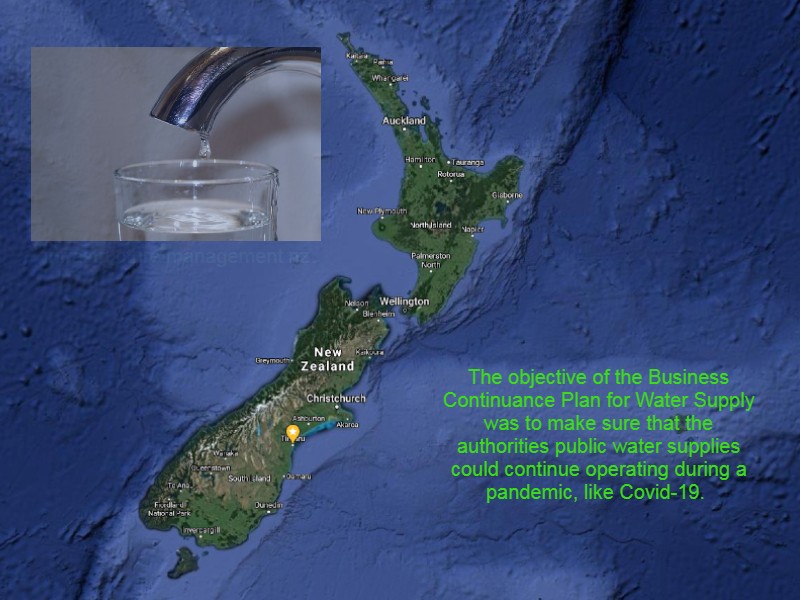
Back in 2009, New Zealand prepared for a possible swine flu pandemic, which from a planning point of view, gave authorities a scenario to prepare for.
Government Departments and Local Authorities completed pandemic preparation plans at that time, which have been invaluable resources in preparing for the COVID-19 pandemic.

One of our clients in 20o9 engaged Waugh Infrastructure to prepare a specific ‘Business Continuance Plan for Water Supply in Case of Pandemic.’
Some of this 2009 planning has been superseded by the recent work undertaken on Water Safety Plans. Still, I decided to review the report and observe any learnings that could be shared as generally applicable to our industry during COVID-19 preparation and planning.
The objective of the Business Continuance Plan for Water Supply
The Business Continuance Plan for Water Supply’s objective was to ensure that the authorities’ public water supplies could continue operating during a pandemic.
It is a relatively short document at 30 pages.
The Table of Contents is as follows:
- Purpose of Plan
- Key Assumptions
- Description of Water Activity – supplies, treatment plants
- Operating and Maintenance Documents
- Key Staff – Water Operators, Housing of Water Operators and Families, Housing Protocol, Water Activity Staff and Succession Planning
- Service Provision Objectives and Requirements
- Supplies – Personal Protection Equipment, Supply of Fuel, Supply of Chemicals,
- Contingency Plans – Boil Water Notices, Tanker Suppliers and Tanker Availability, Restriction of Flow to Essential Customers Only, Power Outage, Phone Outage
Three critical items stand out in this planning:
One – revisit your key assumptions regarding the possible effect of a pandemic, particularly on front-line water operations staff and their families.
How bad will the pandemic effects be? How wide does the isolation circle need to be? How do you plan to protect and possibly house key staff and their families during the pandemic?
Ensure this assumption review and planning includes critical contractor support – electrical, operations and maintenance, key equipment and chemical suppliers.
Availability and care of people are critical to the maintenance of essential public water services during a pandemic – this includes engineering, operations, maintenance, supply chain, and essential support services. Don’t forget to care for their wider families, or key people may be unavailable.
Two – Ensure you have covered essential supplies and supply chains and that supply continuity and availability are managed.
Three – reassess and plan for the potential unavailability of key services, for example, electricity, telecommunications, and water tankers (in case of inability to supply by pipe).
I trust this brief blog post will be of assistance as you revise, update and complete your pandemic planning for water supply service continuity.





[…] shared three valuable insights that might help you as you plan and implement in relation to your program against the Covid-19 […]